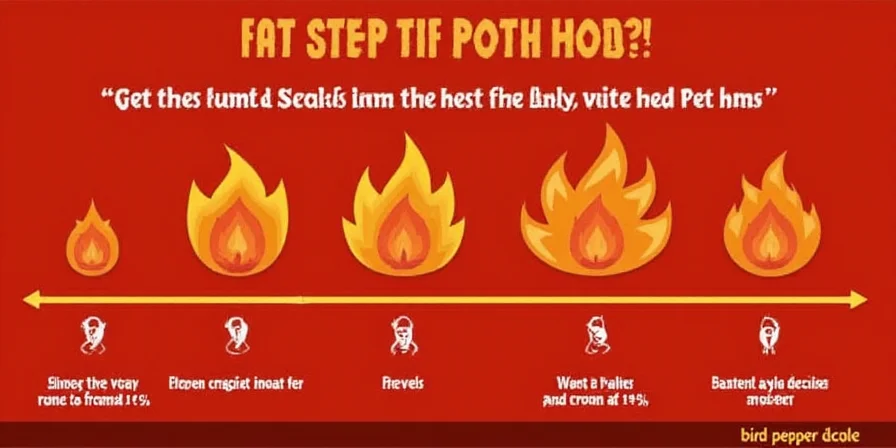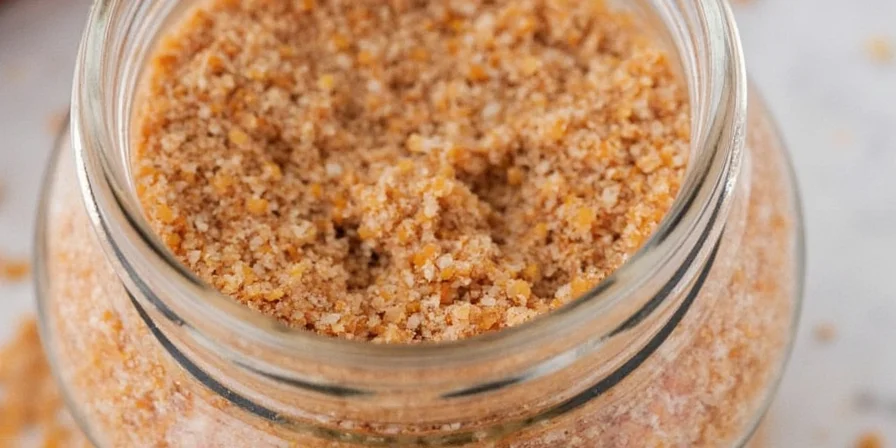Pepper Heat Levels Chart: Complete Scoville Scale Ratings
Looking for the definitive pepper heat levels chart? You've found it. Below is the complete Scoville scale chart showing heat measurements from mild bell peppers to extreme Carolina Reapers. This reference table helps you select the perfect pepper for your recipes without unexpected kitchen disasters.
| Pepper | Heat Level (SHU) | Common Use |
|---|---|---|
| bell pepper | 0 | Stuffed, roasted, or raw in salads |
| poblano | 1,000–2,000 | Enchiladas, mole sauce, chiles rellenos |
| jalapeño | 2,500–8,000 | Salsas, nachos, poppers |
| serrano | 10,000–23,000 | Hot sauces, salsas, soups |
| habanero | 100,000–350,000 | Fiery sauces, marinades, Caribbean dishes |
| ghost pepper (Bhut Jolokia) | ~1,000,000 | Daredevil challenges, experimental cooking |
| carolina reaper | ~2,200,000 | Chef's kiss... or hospital visit |

Understanding the Scoville Scale Measurements
The Scoville scale measures pepper heat in Scoville Heat Units (SHU), representing how much sugar water is needed to neutralize the capsaicin burn. Modern testing uses high-performance liquid chromatography for precision, but the fundamental concept remains unchanged since Wilbur Scoville developed the scale in 1912. This standardized measurement allows for objective comparison between different peppers, though your personal experience may vary significantly based on individual tolerance.

Practical Applications: Using This Pepper Heat Reference
Now that you have the complete pepper heat levels chart, here's how to apply this knowledge in your kitchen:
- Recipe substitution guide: Can't find poblano peppers? Use this chart to select an appropriate substitute with similar heat levels.
- Heat adjustment technique: Want milder habanero heat? Remove seeds and membranes where capsaicin concentrates before adding to dishes.
- Safety planning: When working with extremely hot peppers (300,000+ SHU), always wear gloves and work in well-ventilated areas.

Debunking Common Pepper Heat Misconceptions
Let's clarify some frequent misunderstandings about pepper heat:
- Myth: Seeds contain the most heat.
Truth: Capsaicin concentrates in the white placental membranes—not the seeds. Seeds absorb heat secondarily. - Myth: Red jalapeños are always hotter than green.
Truth: Color indicates ripeness, not heat level. Actual heat depends more on growing conditions. - Myth: Water effectively cools burning mouths.
Truth: Water spreads capsaicin—dairy, fats, or sugary liquids bind to the compound for relief.

Individual Heat Perception Variations Explained
Why does the same habanero feel mild to some and unbearable to others? Genetic variations cause up to 50% difference in capsaicin receptor density between people. Previous exposure, current health, and cultural background dramatically alter heat perception. This explains why identical dishes can be 'perfectly spicy' for one person and 'unbearable' for another. When cooking for groups, provide heat-adjustable elements—like raw pepper slices on the side—to accommodate biological diversity.

Strategic Pepper Pairing Guide by Heat Level
Match specific peppers to ingredients for balanced dishes:
- 0–5,000 SHU (Mild): Bell peppers, poblanos—complement creamy cheeses, pasta sauces, and fresh summer salads without overwhelming.
- 5,000–50,000 SHU (Medium): Jalapeños, serranos—elevate grilled meats, tacos, guacamole, and tomato-based sauces with vibrant kick.
- 50,000+ SHU (Hot to Extreme): Habaneros, ghost peppers—use sparingly in tropical fruit salsas, jerk seasoning, or infused oils where sweetness balances intense heat.

Essential Safety Tips for Handling Hot Peppers
Protect yourself while working with high-heat peppers:
- Always wear nitrile gloves when handling peppers above 10,000 SHU—latex won't protect against capsaicin transfer.
- Prepare a dairy station with milk or yogurt nearby for accidental burns—capsaicin binds to fat molecules.
- Avoid touching your face during preparation—capsaicin can transfer to sensitive areas hours later.
- Clean surfaces thoroughly with soapy water after cutting hot peppers—alcohol-based cleaners can spread capsaicin.
- Start with small amounts and gradually increase—your tolerance builds with regular, moderate exposure.

Frequently Asked Questions About Pepper Heat Levels
How do I reduce the heat of a pepper in a dish?
Add dairy products like milk or yogurt, which contain fats that bind to capsaicin. You can also use sugar, acidic ingredients like lime juice, or remove the seeds and membranes where most heat resides. Diluting with additional mild ingredients also helps.
Are hotter peppers healthier?
Hotter peppers contain higher capsaicin levels linked to potential benefits like improved metabolism and pain relief. However, all peppers—regardless of heat—are rich in vitamins A and C. Benefits require moderate consumption; excessive intake may cause digestive issues.
Can I build up a tolerance to spicy food?
Yes, regular consumption gradually increases tolerance. Start with milder peppers and slowly introduce hotter varieties. Over time, your sensitivity decreases as receptors adapt. Always pair with cooling elements during the process.
Why do heat preferences vary so much between people?
Genetic differences affect capsaicin receptor density—some people have 50% fewer receptors. Cultural exposure and personal experiences also shape preferences. Many enjoy the endorphin rush from spicy food, creating a pleasurable 'benign masochism' effect.
How should I store fresh peppers properly?
Store in the refrigerator's crisper drawer inside a paper bag to absorb moisture. Whole peppers last 1-2 weeks. For longer storage, freeze chopped peppers in oil or pickle them. Never store near ethylene-producing fruits like bananas.
Can I accurately measure pepper heat at home?
Professional Scoville testing requires lab equipment, but you can gauge heat comparatively. Taste tiny pieces (wearing gloves!) against known peppers. Mild peppers cause no sensation, medium ones produce tingling, and hot peppers create immediate burning. Always have dairy nearby for safety.











 浙公网安备
33010002000092号
浙公网安备
33010002000092号 浙B2-20120091-4
浙B2-20120091-4